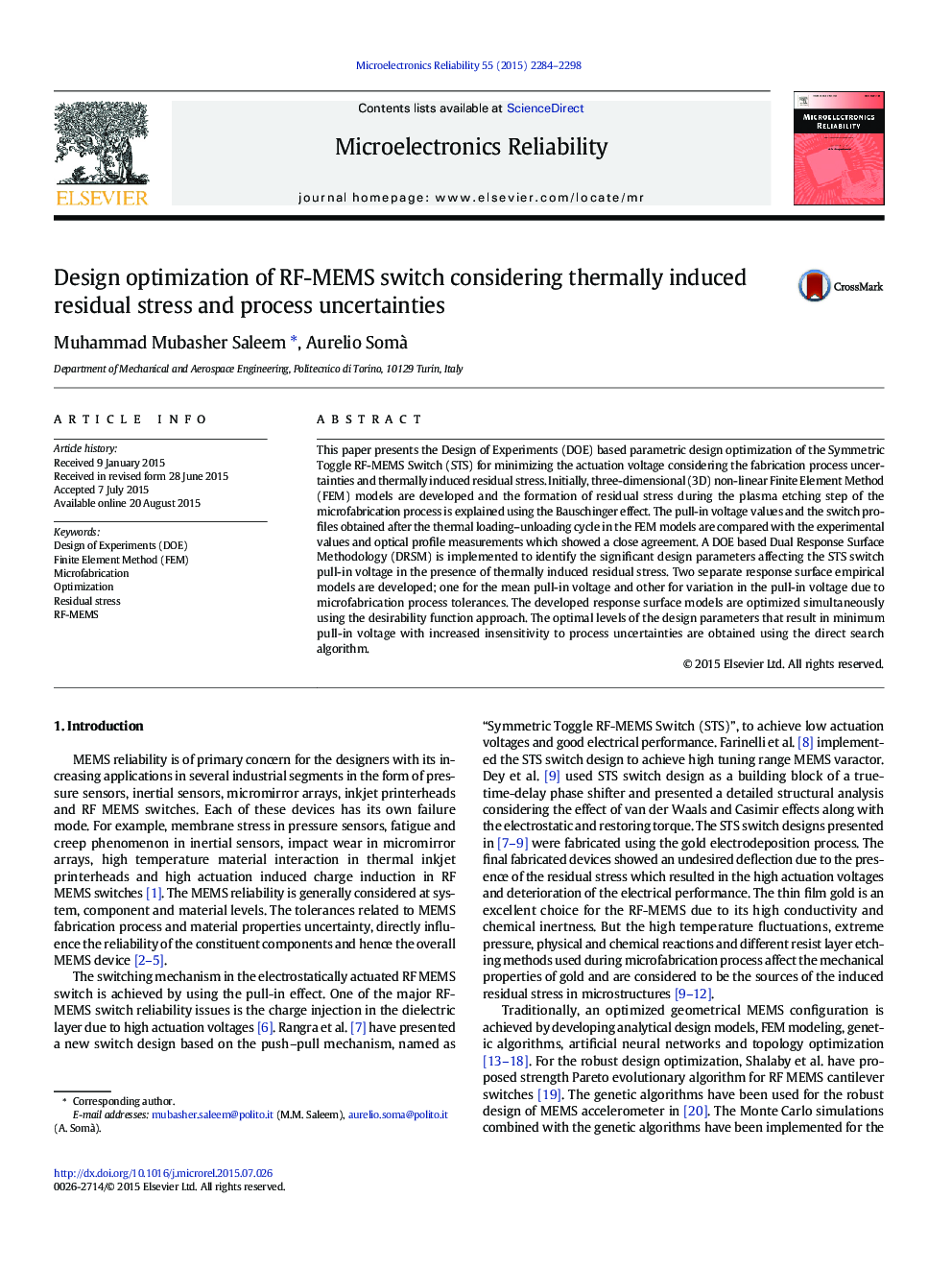| کد مقاله | کد نشریه | سال انتشار | مقاله انگلیسی | نسخه تمام متن |
|---|---|---|---|---|
| 548939 | 872300 | 2015 | 15 صفحه PDF | دانلود رایگان |

• A Design of Experiments (DOE) based parametric design optimization of RF-MEMS switch is presented.
• DOE based optimization methodology is implemented for the optimization of Symmetric Toggle RF-MEMS Switch (STS).
• The effect of fabrication process uncertainties and residual stress is considered in the Finite Element Method (FEM) models during the optimization process.
• A Dual Response Surface Methodology (DRSM) is implemented to minimize the RF-MEMS switch pull-in voltage with increased robustness to process uncertainties.
This paper presents the Design of Experiments (DOE) based parametric design optimization of the Symmetric Toggle RF-MEMS Switch (STS) for minimizing the actuation voltage considering the fabrication process uncertainties and thermally induced residual stress. Initially, three-dimensional (3D) non-linear Finite Element Method (FEM) models are developed and the formation of residual stress during the plasma etching step of the microfabrication process is explained using the Bauschinger effect. The pull-in voltage values and the switch profiles obtained after the thermal loading–unloading cycle in the FEM models are compared with the experimental values and optical profile measurements which showed a close agreement. A DOE based Dual Response Surface Methodology (DRSM) is implemented to identify the significant design parameters affecting the STS switch pull-in voltage in the presence of thermally induced residual stress. Two separate response surface empirical models are developed; one for the mean pull-in voltage and other for variation in the pull-in voltage due to microfabrication process tolerances. The developed response surface models are optimized simultaneously using the desirability function approach. The optimal levels of the design parameters that result in minimum pull-in voltage with increased insensitivity to process uncertainties are obtained using the direct search algorithm.
Journal: Microelectronics Reliability - Volume 55, Issue 11, November 2015, Pages 2284–2298